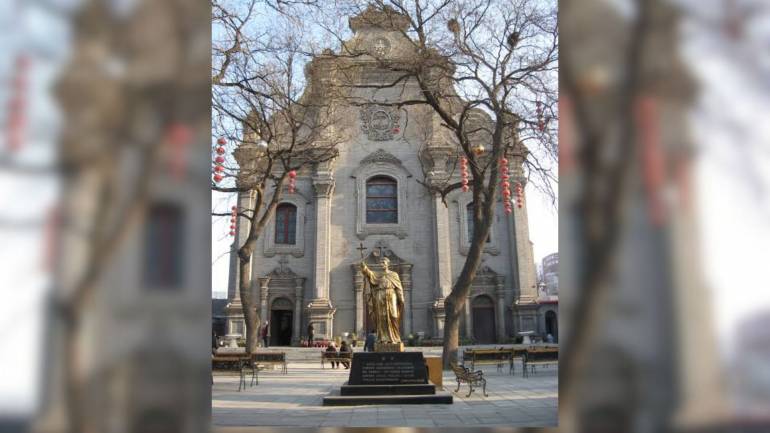Cathedral of the Immaculate Conception: The Oldest Catholic Church in China

The building is China's oldest Roman Catholic cathedral church
This church is known in Chinese as Xuanwumen Catholic Church.
It is China's oldest Roman Catholic church and the major cathedral in Beijing's parish.
Located in Xicheng, a district that has Beijing Financial Street in its jurisdiction.
The Immaculate Conception Cathedral has a Chinese-style gate. A massive cross stands atop the roof.
The altar occupies the northernmost section of the church.
An image of Christ occupies the west side of the altar.
A painting of Mary is fixed on the wall behind the pulpit. A crucifix is placed beneath the painting.
Lamps hanging from the dome illuminate the interior.
The church's hall has rows of pillars on both sides for support.
The walls behind the pillars have glass windows installed.
Shops selling religious items stand in the southern part of the yard that houses the church.
The cathedral has an observatory, and rooms that store scientific books and instruments.
After Matteo Ricci, a Jesuit Italian priest, arrived in Beijing in 1601, the Ming dynasty founded this church in 1605.
It evolved from a chapel next to the house that sheltered Ricci during his stay in Beijing to the cathedral that it is now.
A cross was placed at the top of the chapel, which had a Chinese design, to inform the public that it was a religious structure.
An anti-Christian group destroyed the church in 1904, leading to its reconstruction in a baroque style.
Ricci, who mastered the Chinese language and writing system, was one of the founding Jesuit missionaries in China.
He came to China at the invitation of the Wanli Emperor to use his scientific abilities, such as solar eclipse prediction.
He also devised a world map, known as the Kunyu Wanguo Quantu, written in Chinese in 1602.
A bronze statue of Ricci stands in front of the church.
The Chinese characters "Wan Fu" are carved underneath his statue. Wan Fu in Chinese means "hail Mary."
When the church was under the leadership of Fr. Johann Adan Schall von Bell, a German Jesuit, a new church was constructed in 1650. It was during the reign of the Qing dynasty.
The construction was completed in two years.
It became a cathedral after a bishop was installed—Bernardin della Chiesa, a Franciscan—in 1690. He was the first Catholic bishop in Beijing in 300 years.
In 1720, the church was damaged by an earthquake. It was restored.
Another earthquake destroyed it in 1730.
The Yongzheng Emperor of the Qing Dynasty donated a large amount of silvers for its repair. The cathedral's windows became larger and taller.
In 1775, the church was destroyed by a fire.
Emperor Gaozong of the Qing Dynasty donated 10,000 taels of silver to repair the church.
However, the cathedral was closed in 1838, during the rule of Emperor Daoguang, due to the church's conflicts with the government.
It reopened after the Second Opium War in 1860.
The church has more than five thousand members today.
Masses are said in Chinese, English, Latin, Spanish, and Italian.








